Hive Stock Images: the Walnut tree (Juglans regia), emblem of the entire Andean region.
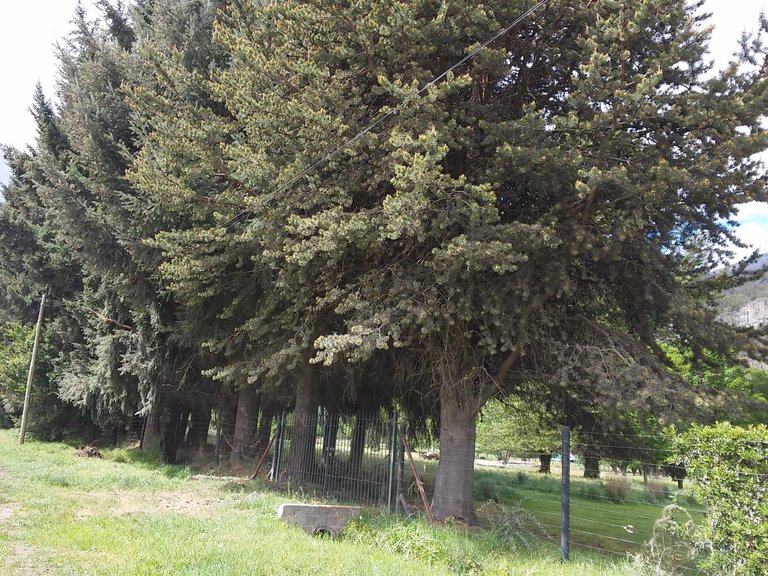
Walnut trees on the pavements, in the avenues, in the courtyards of the houses, on the farms and even in the squares.
It is something like the provincial tree in this region.
It also serves as a livelihood for many people who collect its fruits, clean them, in some cases open them and sell the previously bagged nuts.
Originally from Asia, in a wide region between Turkey and the Himalayan chain, although with a probable centre in present-day Iran (Persia), it has managed to adapt without major problems to the cold and dry climate of the Andean region.
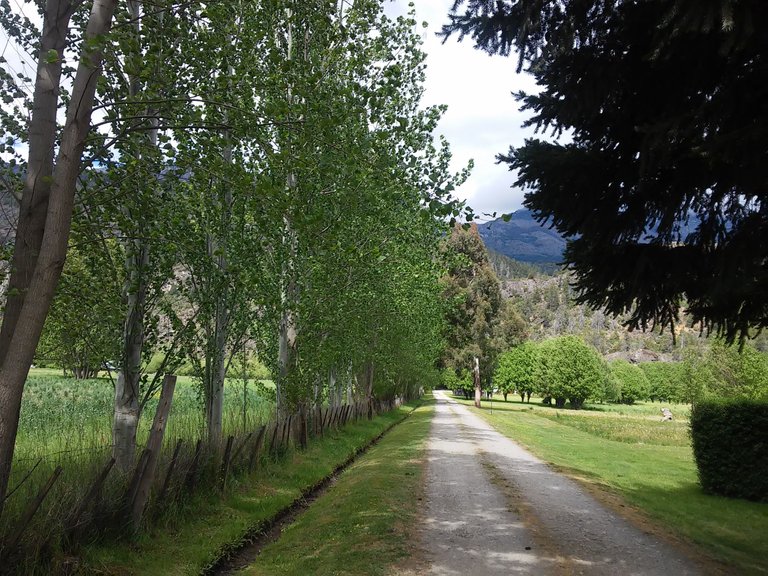
It is a very tall tree that can reach almost thirty metres in height (the equivalent of a ten-storey building to give you an idea of its height).
The branches of the walnut tree are full of very large leaves that can be up to thirty centimetres long, which fall off in winter to sprout again in spring.
Originally grown in isolation on farms and other rural environments or in large backyards in provincial houses, but later - especially in California (USA) - they began to be cultivated intensively.
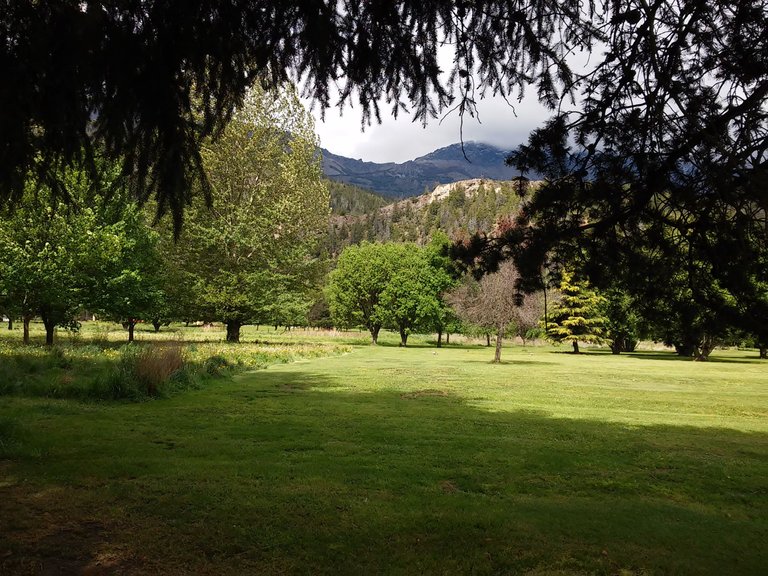
Walnuts are known for their high content of polyunsaturated vegetable oils.
Walnut oil is extracted from walnuts and is used for many purposes, especially commercially.
Although the oil contains oleic acid, which is present in olive oil, for example, its proven cholesterol-lowering effect is due to its richness in alpha-linolenic and linoleic acid (polyunsaturated).
These oils increase arterial elasticity, which is why some medical studies have shown that eating about five walnuts a week is a good way to take care of the heart.
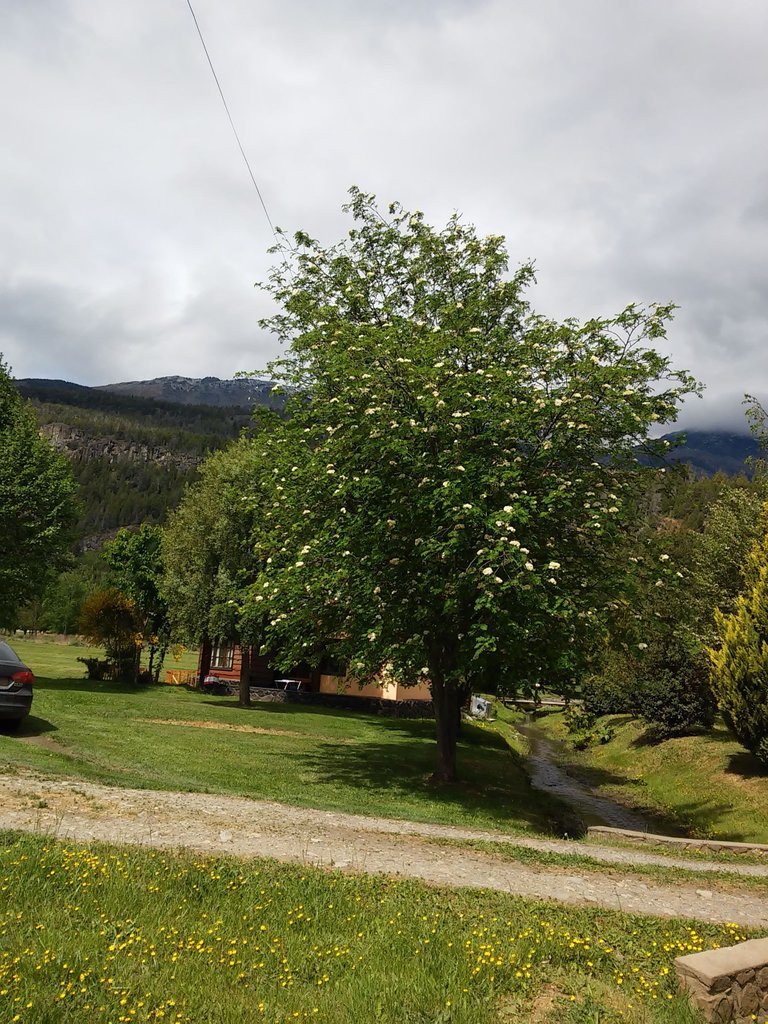
In all the Andean Region, but especially in El Bolsón, there is a great quantity of walnut trees, to such an extent that the area of farms dedicated to the cultivation and production of hops and fine fruits is surrounded by roads on both sides, and especially on the side where the water channel runs, by centenary walnut trees that give their name to the place: Camino de los Nogales (Road of the Walnut Trees).
They grow in the company of the river willow, a species that was incorporated to this region to repopulate with plants some regions in which the native forest was disappearing.
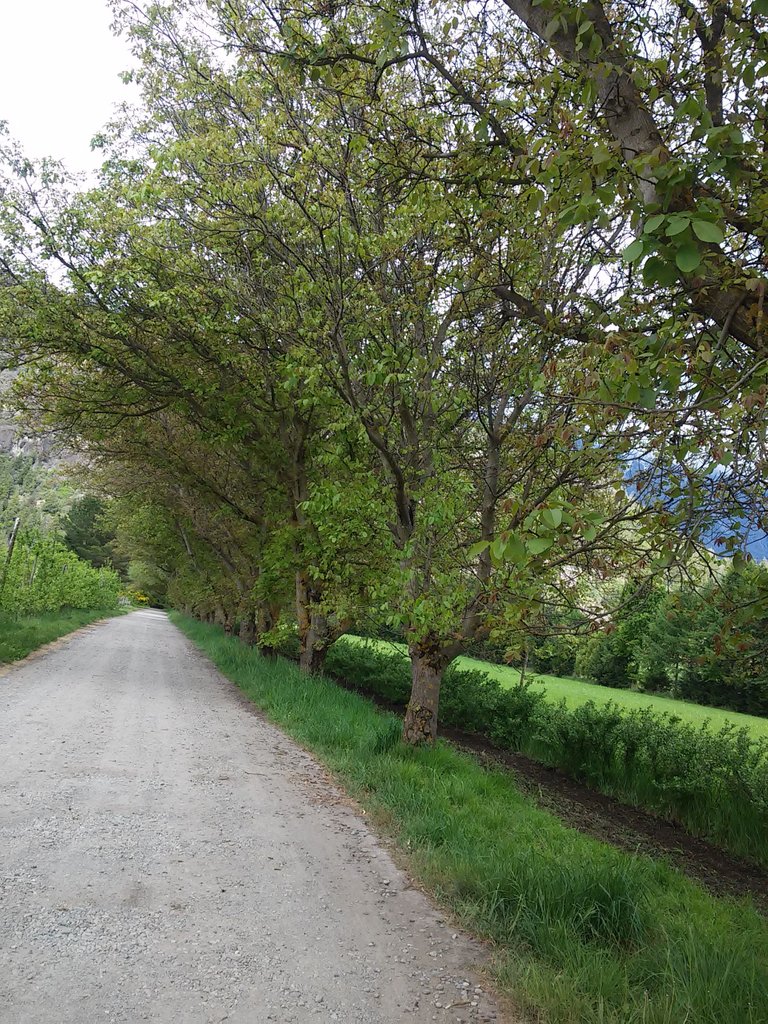
In some colder regions it is also cultivated for its firewood rather than for its fruit.
In carpentry, it is often used for high quality work on some musical instruments such as pianos or on some weapons such as shotgun butts.
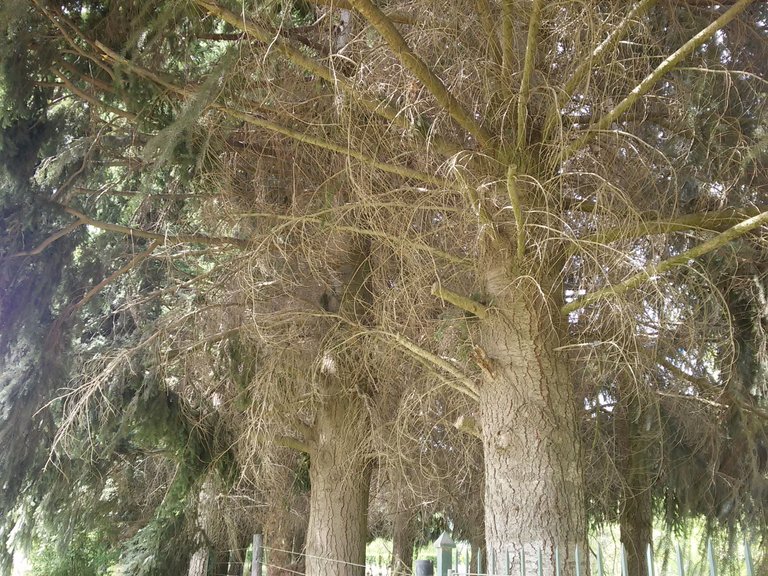
Throughout the Andean Region, in Argentine Patagonia, it is a plant species protected by the National Parks Law, which prohibits its commercial exploitation.
The walnut trees are perfectly integrated in an area that nowadays is sedede agrotourism activities, cultivation and production of fine routes, organic vegetables, hop plantations, dairy and trout farms, among others.
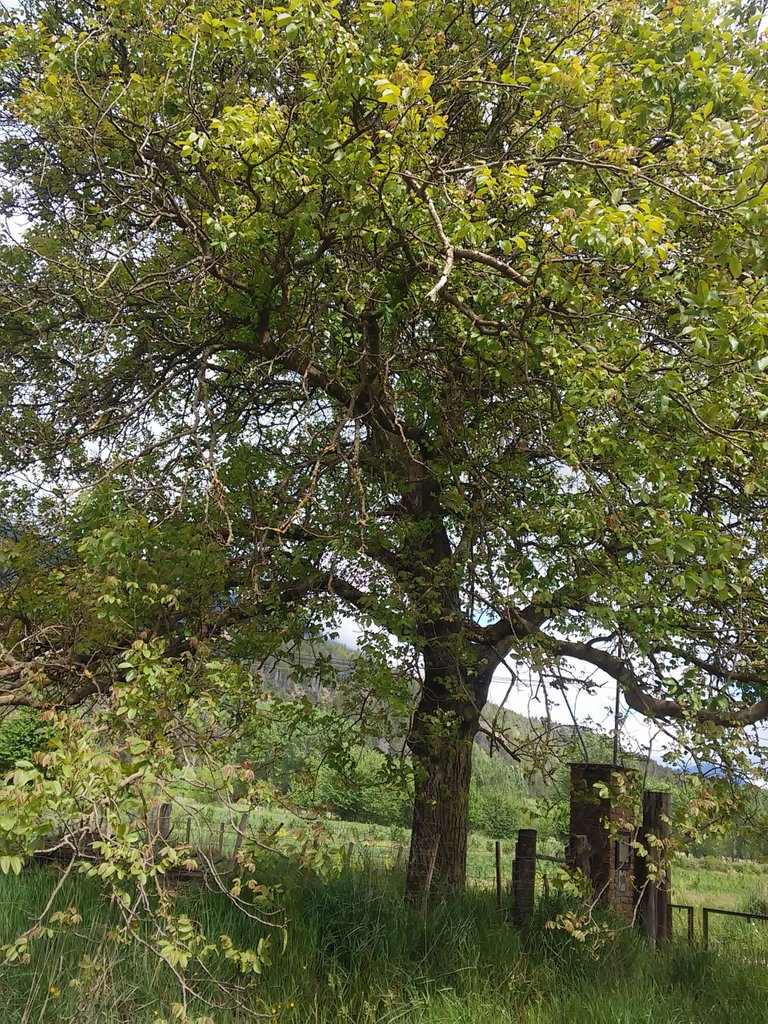
All these walnut plants are located at the side of the gravel road that can be travelled on foot without any problem, enjoying the pleasure of a beautiful walk until reaching the vicinity of the Nahuelpan Waterfalls.

Walnut has countless pharmacological uses, whether external (skin conditions such as burns, skin ulcers or pruritus) or internal (diarrhoea, hypothyroidism, external skin treatment, prevention of hair loss, respiratory system disorders, prevention of tartar on the teeth, etc.).
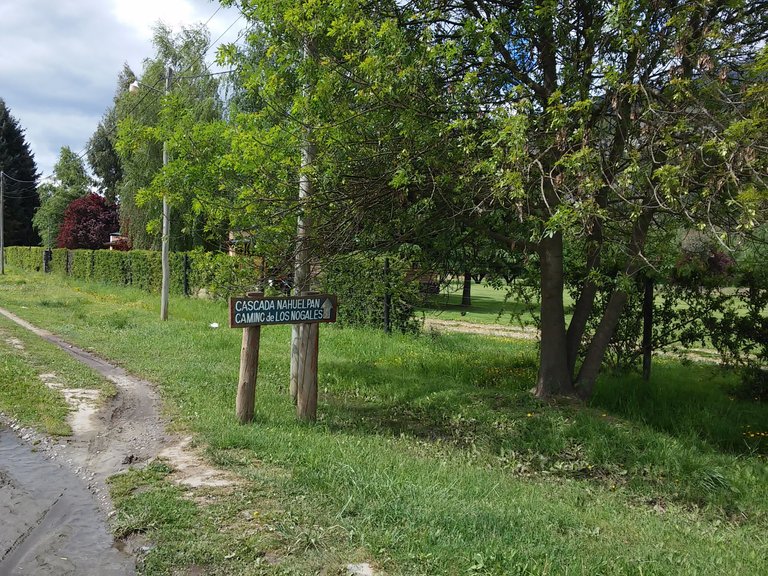
Walnut has countless pharmacological uses, whether external (skin conditions such as burns, skin ulcers or pruritus) or internal (diarrhoea, hypothyroidism, external skin treatment, prevention of hair loss, respiratory system disorders, prevention of tartar on the teeth, etc.).
But, above all, it is a haven of peace and tranquillity. And, of course, an excellent shade for hot summer days.
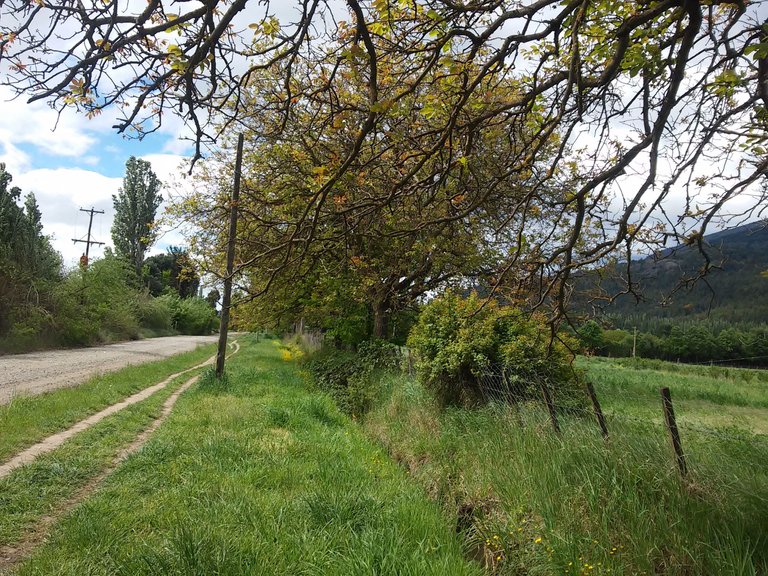
You may freely use these photos on Hive giving relative credit to their author @hubeyma.
If you are not familiar with the rules governing the use of images in this community please read this article
- Flora of the Andean Region: Retama (Retama sphaerocarpa L.)
- Random pictures of shrubs, plants and flowers of the Argentinean Patagonia.

Your content has been voted as a part of Encouragement program. Keep up the good work!
Use Ecency daily to boost your growth on platform!
Support Ecency
Vote for new Proposal
Delegate HP and earn more
Thank you for visiting and curating my content @ecency through the Encouragement program.
Enhorabuena. Has recibido apoyo
The Creative Coin Fund.
Únete al servidor de Creative Coin y comparte tus publicaciones.
Congratulations. You have received support from
The Creative Coin Fund.
Join the Creative Coin server and share your posts.
Selección manual de @elemarg25
Image by barbara-orenya
Wow, impressive, the tree has very thick leaves... ^_^ I have never seen like this one before...